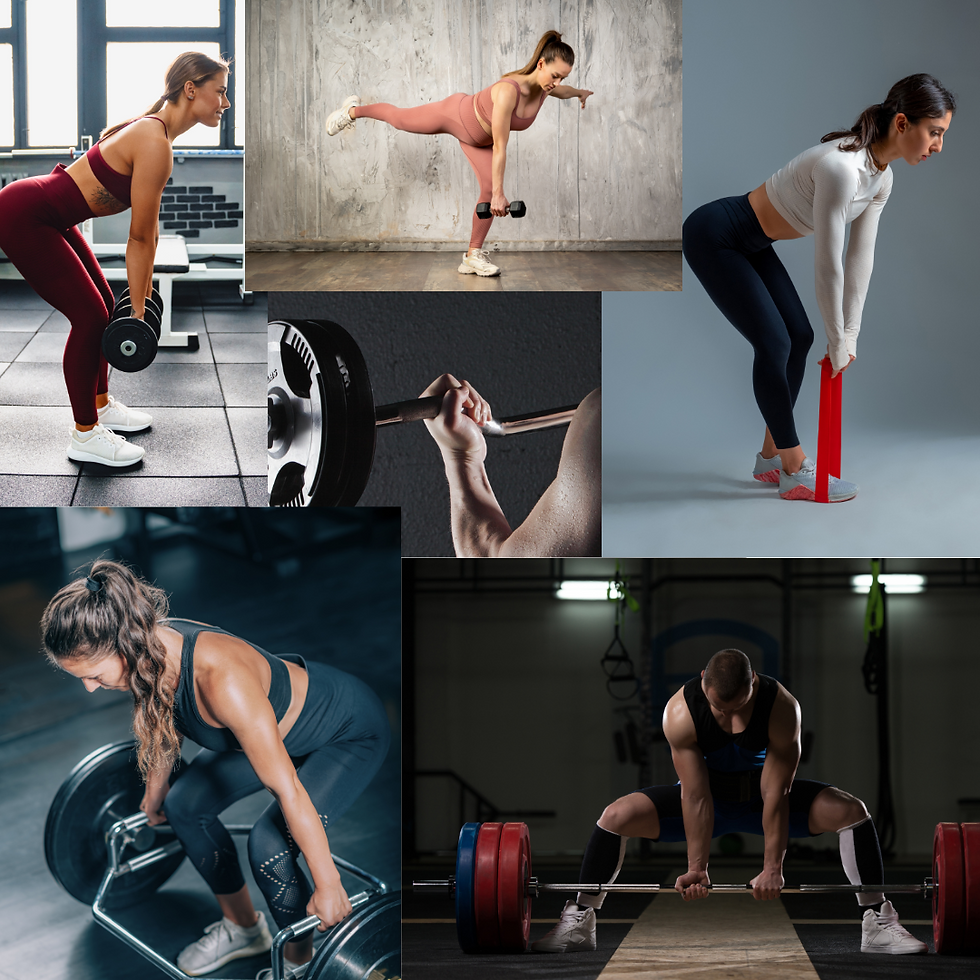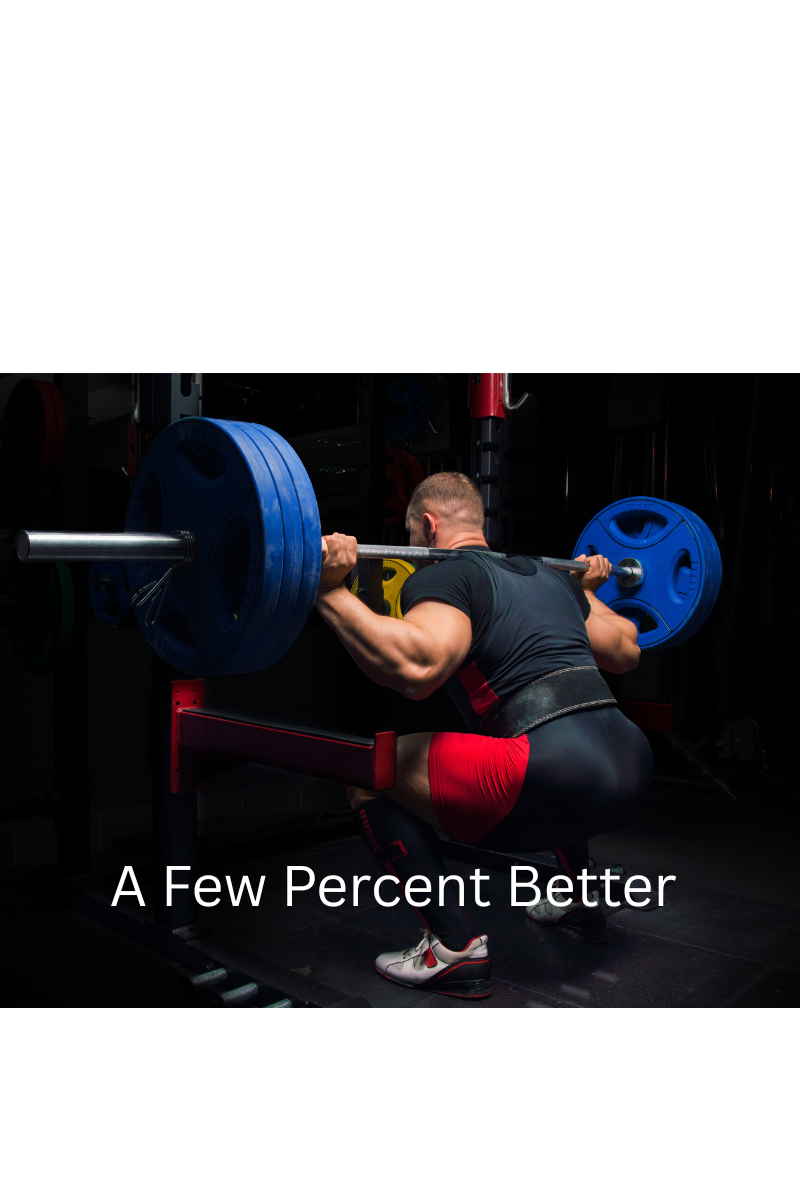Why deadlifts are your physical therapist's best friend
- Ryan Barry
- Aug 6
- 6 min read
Coming from a physical therapist, more people need to deadlift
Let’s talk about one of the most misunderstood and feared exercises in the fitness world: the deadlift.
As a physical therapist, I’ve lost count of how many times patients have come into my clinic saying, “I stay away from deadlifts—they’re bad for my back”. And yet, there they are sitting in front of me (referred by their doctor to see me, the physical therapist) for their back pain. And it hasn't dawned on them that they aren't here because of doing deadlifts; they are seeing a physical therapist because they avoid anything that looks, smells, or even resembles a deadlift. So their back, of course, hurts when they try to do deadlift things...like put their shoes on, grab something from the bottom cabinet in their kitchen, or god forbid, pull their pants up.

Deadlifts Are Not the Enemy
Deadlifts are not dangerous. They’re one of the most basic and fundamental movements your body does on a daily basis. Bending over and picking something up off the ground. It has the potential to be the best and most potent strength-building exercise. Every time you lift groceries, pick up a child, or move furniture, you’re essentially doing a deadlift. So why not train your body to do it safely, more efficiently and overall better? Word to the wise...don't let your friends know you're deadlifting more. They will automatically know you're better at moving boxes than they are, so they will ask you to help them move. Just be out of town that day. You're welcome.
What Deadlifts Actually Do for Your Back
Here’s what happens when you deadlift:
Strengthens the posterior chain: Your glutes, hamstrings, and spinal erectors are all activated and trained to work together. You need this muscles to stand upright and not walk like a turtle. The more you deadlift the better your walking posture. You shouldn't be looking at the your shoes when you walk, you've seen them before, they aren't that interesting.
Improves core stability: Your abdominal muscles and deep core stabilizers fire up to keep your spine protected. All the "core" and "ab" muscles (yes, I put them in quotations) get rocked during a deadlift. Unless you deadlift looking like an upside bowl of mashed potatoes...then we've got bigger things to worry about. But if you just deadlifted and didn't ever do a single crunch again you would still have a "core" (did it again with the quotations) stronger and healthier than 90% of the world.
Enhances spine resilience: Your spine isn’t a fragile twig—it’s a robust, adaptable structure. When gradually exposed to load, it becomes stronger, not weaker. Your spine is designed and built to bend, twist, and move. The more you use it and train it, the stronger and healthier (I feel like I'm repeating myself) it will become and the less likely you ever have to see me.
Gain Confidence: The more you deadlift (reps and weight), the more confidence you get to do normal everyday life stuff. Crazy stuff happens when you lift heavy shit. In addition to just feeling better about yourself, you start to feel better about life. And that's the main reason why you exercise in the first place. It isn't to be the best in the gym, it's to be better outside of it.
Think of deadlifting like brushing your teeth—when done regularly, it’s preventive care. Maybe not twice a day like your dentist recommends, but also, they aren't the deadlift experts, so... (take that, Dr. Bakus, he's my dentist and he's never once mentioned deadlifts to me).
The Key Is Proper Progression
The problem isn’t deadlifts. The problem is usually everything else. If you’ve ever tweaked your back doing a deadlift, chances are it wasn’t the lift itself—it was all the other stuff you did (or didn't do) before you deadlifted. Going to the gym with little sleep, high stress at home or work, doing more weight than normal, coming back from a time of inactivity (vacation or just a general break from lifting), or just doing something new too fast, too soon, or too much.
Here’s what I look for when coaching patients and clients:
Generally, a neutral spine (no excessive rounding or arching). Don't want you looking like a turtle when you start, all hunched over weird weird-looking. If it looks weird, then it probably feels weird too. And vice versa. But if you have some freaky long limbs or slightly resemble a Hobbit, then your position and technique might look a bit different. Find a starting position that allows you to complete Step #2.
Hip hinge pattern (not squatting the weight up). It's a butt dominant movement. So let the butt do the work. Hips forward and backward. That's the only thing that should on your mind. Not pulling your torso up and dragging your shoulders back. Butt checks forward to crack a walnut and butt cheeks backward to fart on your friend behind you. That's it.
Controlled tempo (no jerky, rushed movements). The deadlift is not a fast exercise. This is not your prom night dance moves. You will move the weight under control and hip first, or it will show just how much pain it can cause you. Just like your high school crush leaving you on read. The faster you move on the deadlift, the more your body wants to use other muscles to help (like all your erectors), which is why your back is super sore the day after deadlifting but your glutes and hamstrings are fresh as a daisy. It should be the other way around.
Appropriate loading and progression (start light and build over time). Ain't no one timing your ass on when you need to get stronger. We all have the rest of our lives to get buff. Take your time. There is always another chance to go to the gym. Relax, Rocky.

Step 5, kinda: Variety is the spice of life (with lifting and food, but not all things, like marriage). Change up your deadlift. The reps, volume, loading and style are all things that can and should be changed as you get more comfortable with the general movement. Barbells, dumbbells, kettlebells, bands, oh my! Frigging Romanian, Sumo, or Trap-bar styles. The possibilities are endless (look at my cool picture of all the neat ways to deadlift).
Follow these basic ass steps and get to deadlifting. If you need more proof or reasons why, let me tell you why even my injured and painful patients can't escape deadlifting.
Deadlifts in Rehab? When I'm already in pain?? WTF?
Yes, even in rehab! Deadlifts are my best friend and go-to movement pattern. When someone shows up to my clinic with low back pain, the primary reason is often that they have trouble bending over to pick something up from the ground or standing up straight after sitting for any amount of time. Now, doesn't that sound like a deadlift? Picking something up off the ground and standing up straight? So, why wouldn't we practice and train them to improve and become more comfortable with the one movement that brought them to see me in the first place? Seems kinda like a no-brainer. That's like saying I don't drive because other people tell me it's dangerous and I could get hurt. So I stay inside and don't do anything. But eventually, avoiding driving will only make it that more difficult (and possibly injure yourself) when you are forced to drive. Because you're in a bad situation, you don't know how, and you've been living in fear. Avoiding deadlifting isn't going to make your back stronger. It isn't going to make you better equipped at handling your normal daily life. It's going to make you more fearful of normal movements that your body has spent thousands of years doing. Avoiding deadlifts will slowly reduce your ability to live your life. Health is wealth. And the more yo ass can deadlift, the wealthier you are... it's a very popular fitness slogan. Surprised you haven't heard of it. So buy the bumper sticker and starting picking up some heavy stuff. And if you don't know how, reach out to me, I'll teach you.
Bottom Line: Deadlifts Build Resilient Backs
So getting back to the basics...the deadlift as an exercise is a tool—and like any tool, it depends on how you use it. When performed appropriately and with proper loading and progressions, deadlifts will strengthen your back, not hurt it. The stronger something is, the more resilient it is. Deadlifts will not make your back invincible. Life still happens, and injuries are a part of life. BUT the stronger and more conditioned your back (and body and mind) are to training and recovering, the easier and faster your body will bounce back from any injuries. It's so much easier to get my patients back to normal and pain-free when they are already strong and move well. It's an uphill climb with no shoes or water, and there is an ice storm, and you just lost your backpack full of snacks when you're injured, in pain, and are weak, stiff, and unhealthy. Its not rocket science. Its normal ass science.
So, if you’ve been avoiding deadlifts out of fear, let this be your permission slip to stop hiding. Learn where to start, gradually progress with your reps and weight, and enjoy the benefits of one of the most powerful movements in strength training.
Your back will thank you.






Comments